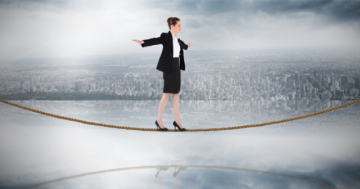
Establish a routine that signals to your brain that your working day has finished. Photo: Zenkit.
Michelle Gibbings says failure to disconnect from work can leave you tired, stressed and unable to enjoy your free time. She has developed ways to avoid always being ”on”.
It’s Sunday, and you have the ”Sunday Scaries”. Are you already thinking and perhaps stressing about the week ahead?
If so, you’re not alone. Research from the University of Exeter in the United Kingdom has found that the blurring of boundaries between work and home life is one cause.
Finding ways to switch off is essential, but often hard. Over the years, I have had to really work at this. Switching off was never very easy for me, but I have developed seven strategies that have helped and I will pass them on to you.
Schedule tomorrow: Before you finish your working day, write down what you want to achieve at work on the following day. By outlining your tasks and scheduling your workday in advance, you stop from ruminating about everything you need to do tomorrow.
Have rituals: Much of what we do each day is a habit, a regular pattern of behaviour. So establish a routine that signals to your brain that your working day has finished.
It might be getting out of your work clothes, meditating, switching your phone to silent, listening to a podcast or calling a friend.
Set boundaries: You need to establish two types of boundaries – those with yourself and those with your boss and work colleagues.
If you consistently work long into the evening and answer emails late at night, you create a pattern of behaviour for yourself and those around you.
Discuss boundaries with your colleagues and boss and agree on the protocols for handling calls and emails outside set work hours.
Find the off-switch: It’s always easy to be ”on”, so use technology to help you switch ”off”. Have your phone automatically switch to ”do not disturb” and turn off social media push notifications and email alerts at set times.
Book time for fun: Plan and schedule regular events in your calendar that force you to leave your work desk and not burn the midnight oil.
These could be art classes, catching up with a friend, or attending a community event. These activities not only help you switch off, they also help you maintain balance and connection.
Shake it off: In the iconic words of Taylor Swift, ”Shake it off”. Exercise is one of the best things you can do to leave your workday behind.
Get your blood pumping and those endorphins zinging through your body, and you’ll leave your workday behind.
Celebrate your progress: Developing new workplace habits takes time and effort, so be patient with yourself and celebrate your progress.
As the author of some of my favourite childhood books, Dr Seuss, wrote: ”When he worked, he really worked, but when he played, he really played.”
Michelle Gibbings is a Melbourne-based workplace expert and an award-winning author. She’s on a mission to help leaders, teams and organisations create successful workplaces – where people thrive and progress is accelerated. She can be contacted at support@michelle gibbings.com. This article first appeared at https://www.changemeridian.com.au/latest-news/.











